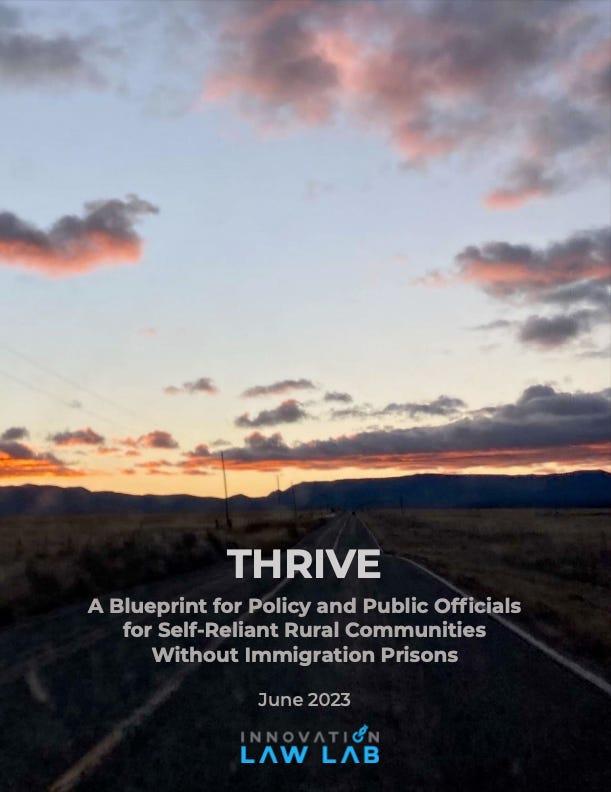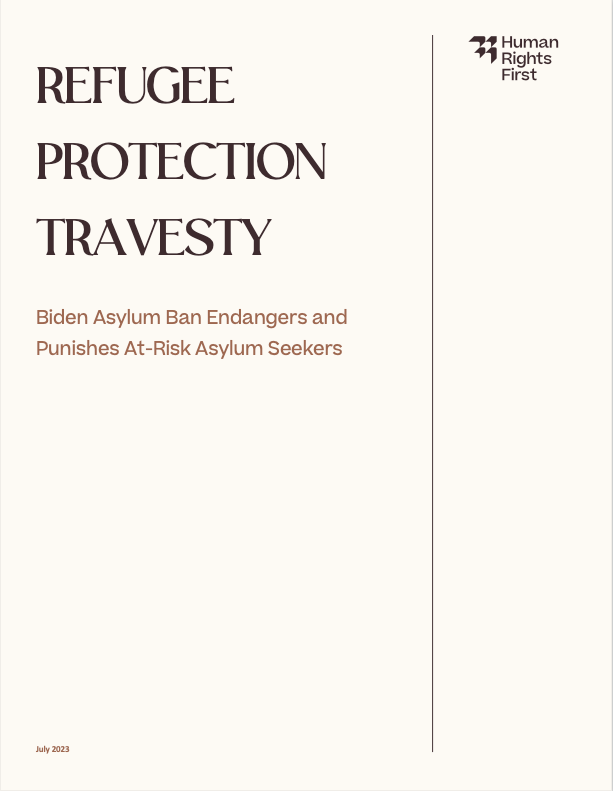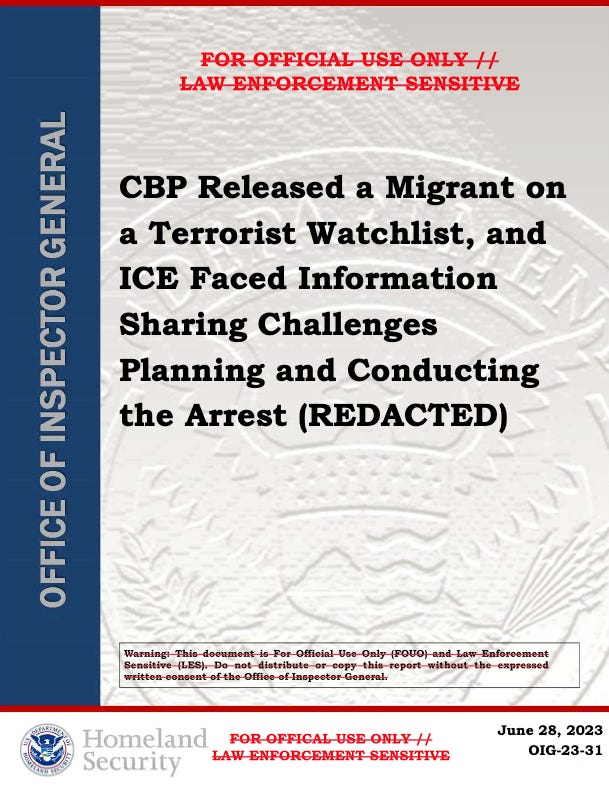Four New Reports Examine Key Parts of US Immigration System
Four new reports look at rural immigrant detention centers, systemic dysfunctions of immigration courts, consequences of Biden's new asylum policies, and DHS's messy information sharing ecosystem.
Four substantial new reports came out recently that are worth your time to read and save. I have been preparing to write a post on each of them, but rather than delay in sharing these with you, I’ve decided to share them first, then revisit them in coming posts (although I’ll foreshadow some of my discussion points below). Without further ado, here they are.
PS: Before leaving, would you mind leaving a like (❤️) below? It goes a long way to helping get this in front of new readers, and I’d appreciate it enormously.
1. Thrive: A Blueprint for Policy and Public Officials for Self-Reliant Rural Communities Without Immigration Prisons by Innovation Law Lab
This report attempts to debunk the argument that rural immigrant detention centers, whatever you think of them legally and ethically, at least bring jobs and economic development to rural communities. They do not, argues the Innovation Law Lab. The report contains some interesting observations that I had not thought of before. In a forthcoming discussion, likely in a longer form essay with photos, I’ll share my own stories about rural detention centers, integrate findings from the report, and discuss some significant shortcomings of the report. But this is a really well-written report, and timely, too, since the recent slightly upward trend in detention numbers means that rural detained cases are probably going to become a growing part of attorneys’ caseloads.
2. At the Breaking Point: Rethinking the U.S. Immigration Court System by MPI
I’ve always appreciated the work of MPI, but this report is special because of the extremely strong authorship which includes Chris Levesque, new faculty at Kenyon College in Ohio, and Stephen Yale-Loehr, a giant in the immigration policy space (and all-around generous human being).
The report provides a detailed and updated look at the immigration courts, especially (largely failed) efforts to reform the system in recent years. As I mentioned, I’ll come back to this report and discuss some of the report’s more creative proposals. Not to leave you hanging, my short take is that although I am constantly impressed with the ability of so many experts to navigate within the cramped space of state agencies, I am increasingly doubtful that anything short of a comprehensive and grounded critique of the system in its entirety is a worthy intellectual pursuit (my own work included). But let’s put a pin in that for the moment.
Note that MPI is hosting a discussion on the immigration courts TODAY. (If you want to watch that, you need to get on it as soon as you read this.) I shared information about that event last week in a longer post about the immigration courts. Click here to go directly to that section of the post, or see the entire post here:
3. Refugee Protection Travesty: Biden Asylum Ban Endangers and Punishes At-Risk Asylum Seekers by MPI
As I have discussed many times in this newsletter, after Title 42 ended, the Biden administration pushed asylum seekers to use CBP One to register for appointments at ports of entry while effectively outlawing asylum-seeking between ports of entry. This culminated in a major lawsuit which led to a hearing with a federal judge just yesterday about the legality of these policies. Human Rights First produced the most grounded examination so far of the consequences of these policies.
One of the report’s criticisms has to do with the CBP One app, something I wrote about in more detail recently in an open-access article titled “Glitches in the Digitization of Asylum: How CBP One Turns Migrants’ Smartphones into Mobile Borders“ that you can read here (no paywall).
I’ll have more to say about the implicit legal geographies behind the Biden administration’s current border policy regime shortly.
4. CBP Released a Migrant on a Terrorist Watchlist, and ICE Faced Information Sharing Challenges Planning and Conducting the Arrest (REDACTED)
This is a fascinating report from the OIG’s office. I mean that sincerely. You start off thinking it’s going to be a story about terrorists coming across the border (or something inflammatory like that) but it’s actually a story of just how muddled up communication is within the immigration system. The person in question (the one single person that may have sorta been on a no-travel list) was arrested, seemingly without much ado once officials knew they needed to arrest them. What’s far more interesting are the ways in which the reliance on paper filing systems in particular created all kinds of barriers for immigration officials. You can learn a lot about the immigration system in this report.
Support public scholarship.
Thank you for reading. If you would like to support public scholarship and receive this newsletter in your inbox, click below to subscribe for free. And if you find this information useful, consider sharing it online or with friends and colleagues. I maintain a barebones site at austinkocher.com and I share immigration data, news, and research on Mastodon (@austinkocher), Twitter (@ackocher), and Instagram (@austinkocher). You can see my scholarly work on Google Scholar.










Austin: Thanks for flagging these four new reports! Steve Yale-Loehr
Anyone who missed the MPI Zoom discussion yesterday can watch the recording, which Doris Meissner said would be posted on their website.